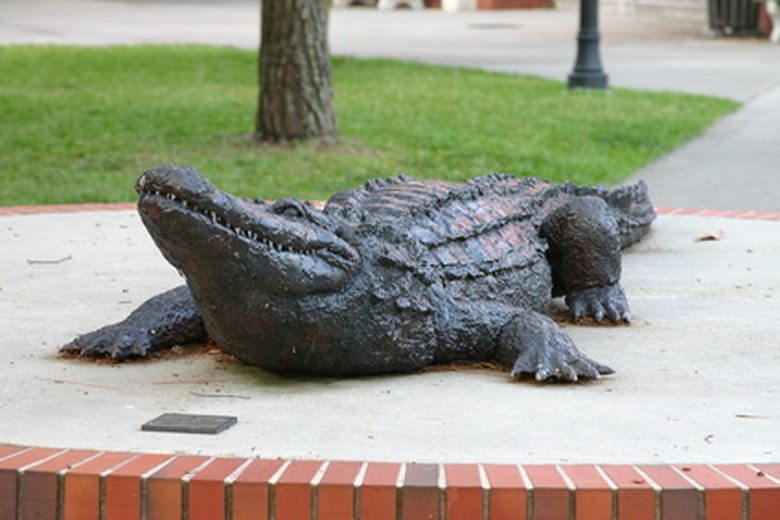Parts Of An Alligator Body
Alligators are formidable reptiles that are common in Florida and other Southeastern states. Only about 8 inches long at birth, they can grow to 15 feet long, and weigh up to 1,000 pounds. Alligators are well adapted to their environment; their bodies, from teeth to tail, are designed to help them eat, swim and survive in the rivers, swamps and marshes where they typically dwell.
Heart
Heart
Although most reptiles have a three-chambered heart, alligators (and crocodiles) have a four-chambered heart like mammals and birds. A four-chambered heart is able to separate oxygenated and deoxygenated blood. This results in more efficient respiration, and allows alligators to swim for longer periods.
Skin
Skin
An alligator's body is covered with bony plates called osteoderms or scutes. Adult alligators are black; juvenile alligators have vertical yellow bands until they are 3 or 4 years old. The black color allows alligators to stay hidden in the mud while looking for prey.
Tail
Tail
An alligator's tail is powerfully muscular, and comprises about half of the animal's body length. The tail is useful for locomotion and steering in the water, and also allows alligators to hydroplane across the surface of the water. Using the muscles in its tail, an alligator can propel itself up to five feet out of the water.
Alligators store fat in the base of the tail, so a wide tail means a healthy alligator.
Head and Teeth
Head and Teeth
Alligators have between 70 and 80 teeth. Each time they lose a tooth, they grow another; they can have between 2,000 and 3,000 teeth in a lifetime. An alligator's jaw snaps shut with a force of about 2,000 pounds per square inch, and cannot be pried open once shut.
The alligator's face has thousands of small nodules that are very sensitive to changes in pressure. These allow the alligator to sense the size, movement and location of other animals in the water nearby.
An alligator's snout is long, with upturned nostrils that allow the animal to breathe normally while the rest of the body is submerged.
Limbs
Limbs
Alligators have four short legs. The hind feet are webbed, and act as paddles in the water. The front legs have five toes, while the back legs have only four.
Cite This Article
MLA
Potter, Emily. "Parts Of An Alligator Body" sciencing.com, https://www.sciencing.com/parts-alligator-body-6909863/. 22 November 2019.
APA
Potter, Emily. (2019, November 22). Parts Of An Alligator Body. sciencing.com. Retrieved from https://www.sciencing.com/parts-alligator-body-6909863/
Chicago
Potter, Emily. Parts Of An Alligator Body last modified March 24, 2022. https://www.sciencing.com/parts-alligator-body-6909863/
